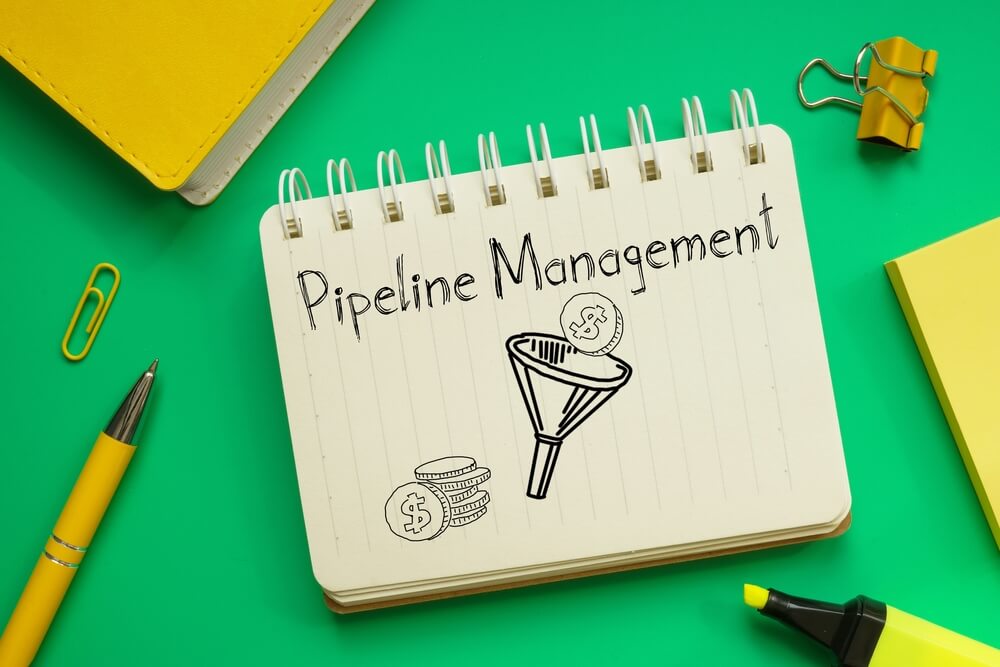
How Does Sales Pipeline Management Work? (With Best Practices)
Sales pipeline management is critical to sales strategy and business growth. A well-managed sales pipeline supports a systematic approach to acquiring and nurturing leads, from initial contact to closing deals.
This article shows how sales pipeline management works, the best practices, and how fractional sales management services can help. It focuses on the following:
- Stages of the sales pipeline
- Effective lead qualification
- Leveraging customer relationship management (CRM) systems
- Analysis and reviews
- Training and communication within the sales team
- Adapting to market changes
Optimize revenue-generating processes, improve forecasting accuracy, and drive sustainable growth with an efficient sales pipeline. Let’s go!
Need some direction for increasing sales? Watch this video to learn what DAP can do for you!
Focusing on the Stages of a Sales Pipeline
Understanding and effectively managing each pipeline stage is crucial for maintaining a streamlined and efficient sales process. It clarifies where each prospect stands in the buying journey, allowing sales teams to tailor their approach based on individual needs and challenges.
The sales funnel comprises the following:
- Lead generation: Identify and capture potential leads through marketing efforts, events, referrals, or other outreach strategies.
- Qualification: Evaluate leads to determine their suitability for the product or service. This involves assessing budget, authority, need, and timeline (BANT).
- Proposal and presentation: Present tailored solutions or proposals that address the leads. Demonstrate the value and benefits of the offered product or service.
- Negotiation: Discuss terms, pricing, or specific requirements with the prospective customer. It involves finding common ground with potential customers and addressing their concerns to move the deal forward.
- Closure: Secure a commitment from the prospect to move forward with the purchase. Complete the necessary paperwork, finalize the details, and initiate the post-sales process.
A fractional sales management services company helps your business manage the pipeline by supporting leads as they proceed with their buying journey.
Implementing Effective Lead Qualification

A robust lead qualification process is essential for effective pipeline management. It ensures that sales teams invest time and resources in prospects with the highest potential for conversion.
Thoroughly evaluating leads based on budget, authority, need, and timeline allows businesses to prioritize the prospects more likely to become customers. This maximizes the efficiency of the sales process and enhances the overall quality of leads entering the pipeline.
Here are the best practices for qualifying leads:
- Establish criteria that determine a qualified lead. These include budget availability, decision-making authority, specific needs, and a realistic timeline for purchasing.
- Foster strong collaboration between the sales and marketing teams to align their activities with lead qualification criteria.
- Develop a lead scoring system to objectively evaluate and prioritize prospects based on their behavior, engagement, and alignment with predefined criteria.
- Use customer relationship management (CRM) systems and marketing automation tools to streamline the lead qualification process.
- Be consistent and proactive in communicating with leads to gather relevant information and insights.
Lastly, conduct regular reviews of lead qualification criteria to align them with evolving business objectives and market dynamics and refine the qualifications based on real-time insights.
Leveraging CRM Systems for Pipeline Management
CRM systems centralize and organize crucial customer data. They provide a comprehensive view of leads, prospects, and customer interactions, allowing sales teams to track progress, identify opportunities, and prioritize tasks.
Leveraging CRM functionalities streamlines communication, enhances collaboration, and creates a systematic approach to managing the entire sales pipeline.
Consider these tips on using CRM tools to track lead progress, manage contacts, and analyze sales data:
- Tailor the CRM system to capture and track lead progress at various sales pipeline stages. Create custom fields to record relevant information, such as lead sources, interactions, and critical milestones.
- Implement automation features within the CRM to manage contacts efficiently. Automatically update contact records based on interactions, trigger follow-up tasks, and use tags or labels to categorize contacts.
- Leverage the analytics capabilities of the CRM to gain insights into sales performance. Analyze key metrics such as conversion rates, win/loss ratios, and average deal sizes.
- Integrate the CRM with email systems to centralize communication history and comprehensively view related activities with each contact or lead.
- Use CRM tools to set up task and activity reminders for sales team members. Use collaboration features within the system to enhance team communication.
Performing Regular Analysis and Pipeline Reviews

Regular pipeline analyses and reviews maintain a dynamic and effective sales strategy. Reviews provide valuable insights into the pipeline’s health, allowing businesses to identify potential bottlenecks, adjust plans, and forecast more accurately.
Consistently evaluating lead progress helps sales teams make informed decisions, optimize resource allocation, and align the pipeline with changing market dynamics and business goals.
The following methods for evaluating pipeline health maximize the efficiency and potential of your pipeline:
- Evaluate lead conversion rates at each pipeline stage to identify areas of strength and potential improvement.
- Measure the velocity of deals moving through the pipeline by analyzing the average time for leads to convert.
- Conduct win/loss analyses to understand the factors contributing to successful deals and those leading to losses.
- Assess the size and value of deals in the pipeline. An overemphasis on small deals usually indicates a lack of focus on more significant opportunities, while a surfeit of large deals poses risks to long sales cycles or revenue volatility.
- Measure individual sales rep performance metrics, such as the number of deals closed, average deal size, and win rates.
Finally, gather customer feedback and satisfaction scores related to interactions throughout the sales pipeline. Customer sentiments provide valuable insights into the effectiveness of the process, potential areas for improvement, and improving customer relationships within the pipeline.
Highlighting Training and Communication within the Sales Team
Training sales teams on effective pipeline management practices contributes to a cohesive and efficient revenue strategy. It equips them with the skills to navigate the pipeline stages, employ CRM tools, and address challenges, enhancing overall productivity.
Clear communication fosters collaboration. It encourages team members to share insights, discuss challenges, and align strategies for a more unified approach to pipeline management.
Train the team on pipeline management and communication with these techniques:
- Develop comprehensive training programs that cover the technical aspects of CRM tools and pipeline management. Emphasize soft skills such as effective communication, active listening, and negotiation.
- Conduct regular workshops and updates to keep the sales team informed about any changes in pipeline management strategies, tools, or company goals.
- Tailor training modules based on the specific team roles. Different positions require specialized skills and knowledge.
- Establish regular communication channels where everyone openly discusses challenges, shares successes, and exchanges best practices.
- Define clear and achievable goals for the team, aligning them with broader company objectives.
Adapting the Pipeline to Market Changes

Adapting the sales pipeline in response to market shifts and customer feedback maintains its relevance and effectiveness. Markets evolve and customer preferences change, requiring continuous adjustments.
The following strategies help companies remain flexible and responsive to changes in the business environment:
- Conduct regular reviews of sales processes, including lead qualification, communication strategies, and closing techniques.
- Keep a pulse on industry trends and market dynamics. Continuously monitor changes in customer behavior, competitor strategies, and broader industry shifts.
- Establish robust mechanisms for collecting and analyzing customer feedback.
- Embrace agile technology solutions, especially in CRM systems and analytics tools.
- Design sales training programs that emphasize adaptability. Equip the sales team with skills that enable them to pivot in response to changing customer demands, market trends, or competitive landscapes.
- Foster collaboration between sales and marketing, product development, and customer support. Open communication channels let different departments use the shared insights to refine the pipeline.
Responding to market changes proactively enables businesses to align their pipeline with evolving customer needs, enhance the customer experience, and stay competitive.
Summing Up
Successful sales pipeline management hinges on clear qualification criteria, strategic lead tracking, and continuous analysis to identify and address bottlenecks. A well-managed pipeline enhances sales success by streamlining processes, providing valuable insights, and fostering proactive decision-making.
Successful sales professionals implement the best practices discussed in this article. They make the buying journey efficient and productive by adapting to market changes, prioritizing customer needs, and maximizing conversion opportunities.
How can continuous improvement and adaptation in pipeline strategies lead to sustained growth in your business? Find the answers by consulting the experts. Contact Digital Authority Partners for the best fractional sales management services today.
Want To Meet Our Expert Team?
Book a meeting directly here




